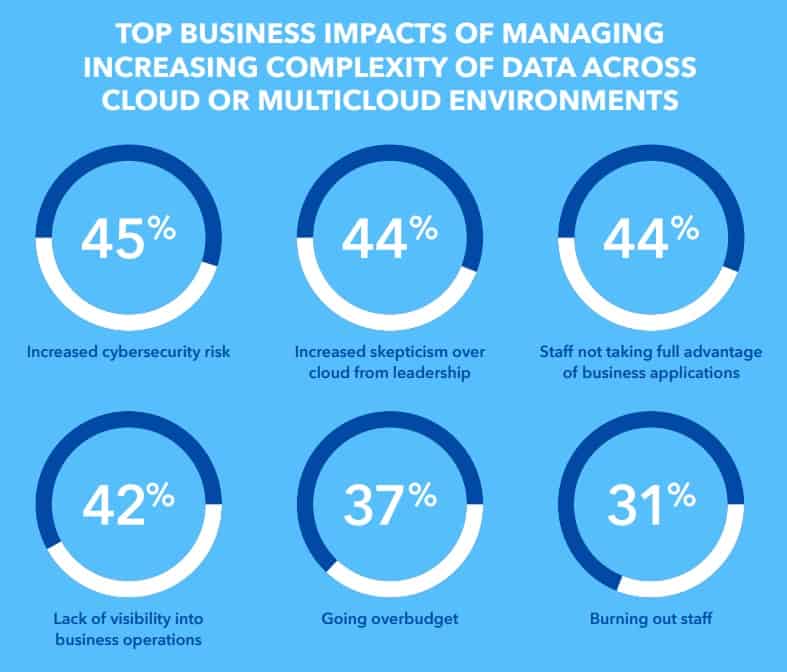Gartner predicts that global end-user spending on public cloud services will grow to US$591.8 billion in 2023, a 20.7% growth from 2022.
The cloud infrastructure and platform services (CIPS) market consists of standardised, highly automated offerings in which infrastructure resources such as computing, networking, and storage are complemented by integrated platform services (managed application, database, and functions-as-a-service offerings).
Gartner predicts that by 2027, more than 50% of enterprises will use industry cloud platforms to accelerate their business initiatives. Industry cloud platforms enable a shift from generic solutions to platforms designed to fit the specifics of the user’s industry.

In the race to the cloud, organisations are discovering for themselves just how 'not simple' things are in the cloud. The near ease at which organisations can now connect to the cloud and acquire the resources they need to run the business also introduced new challenges including security, scalability, compatibility and interoperability, and compliance.
And like creatures of habit, businesses want to be able to customise the cloud to suit their business objectives – further introducing complexity and additional costs.
Matthew Swinbourne, CTO for cloud architecture for APAC at NetApp recalled that back in 2020 when businesses rushed to adopt cloud computing technology, they were doing so to survive. He posited that some could have done so hastily without giving the transition to the cloud more strategic thinking. Now, he believed, some of those decisions are coming home to roost.
"Today the vast majority of organisations have at least two clouds. Private cloud and office platforms are also common," Swinbourne added. "These multi-clouds tend to be siloed – giving rise to complexity that we didn’t have in 2020. Organisations are moving to the cloud with purposes around specific projects, instead of having a singular vision."
He warned that with the cloud being the default platform that organisations use for everything today, complexity has reached a tipping point.
The 2023 Cloud Complexity Report by NetApp found that most tech executives are aware of the complexity problem.
"Our survey discovered that top management is exerting pressure on the CIO, who is accountable for reporting on the ROI of the technology," said Swinbourne.

"More evolved organisations are now establishing formal practices such as FinOps within their organisational structure. This approach brings together technology executives, finance executives, and business strategy professionals to build a strategy and focused effort on technology investment decisions, improvements and cost reductions."
Matthew Swinbourne
The CTO and cloud complexity
Swinbourne warned that the complexity of cloud architectures can result in wasted human effort and increased risks. He opined that it is the responsibility of the chief technology officer (CTO) to streamline operations by implementing a universal data platform across all public cloud types, service providers, and data centres which helps reduce complexity and creates fewer silos of information.
"This approach of simplifying the experience can result in a better product, better return on capital employed, and better results for customers," he added.
The CIO and cloud complexity
Swinbourne posited that building user buy-in is as much a social issue as it is a technology and platform issue.
He explained that this is because the CIO must not only implement new platforms, applications, and evolutions but also train and encourage people to embrace these changes and adapt their work processes.
"Creating a social influence is essential for successfully adopting new technologies and ensuring that users fully engage with them," he continued.
Recommendations
Drawing from the 2023 Cloud Complexity report, he recommended identifying three foundational primitives and filtering your decisions through them.
"I use “Don’t create silos”, “Think about tomorrow” and “Make the benefits real”. I, also, recommend tech leaders likewise come up with their own three foundational primitives, and stick with them." He added.
Swinbourne commented that technology will evolve, and challenges will evolve. But these fundamental outcome-based primitives can serve as a continual guiding light for leaders as they make their tech decisions.
Click on the PodChat player to hear Swinbourne's recommendations on how to turn your cloud complexity into a competitive advantage. He also shared his insides on AI, ChatGPT and the much-discussed single-pain-of-glass.
- How have cloud architectures changed since 2020? What is/are driving this change?
- When viewed from the perspective of operations and business, is there (among C-suite and operation leaders) an understanding of how this complexity will hit back on the organisation in general?
- a. Who is best qualified to lead organisations out of this complexity?
- What is the role of the CTO?
- Why should CTOs care about how complex cloud architectures have/are become/becoming?
- a. How should CTOs work with CIOs to realise the business goals?
- How can the CIO work with business and operations leaders ensure user buy-in and adoption of applications and processes?
- Drawing from the NetApp study on complexity, what are your recommendations given your role as CTO?
- How should leadership navigate the web of emerging technologies without losing sight of business goals and objectives?
- AI – what have we achieved so far?
- Single pane of glass – are we there yet?





